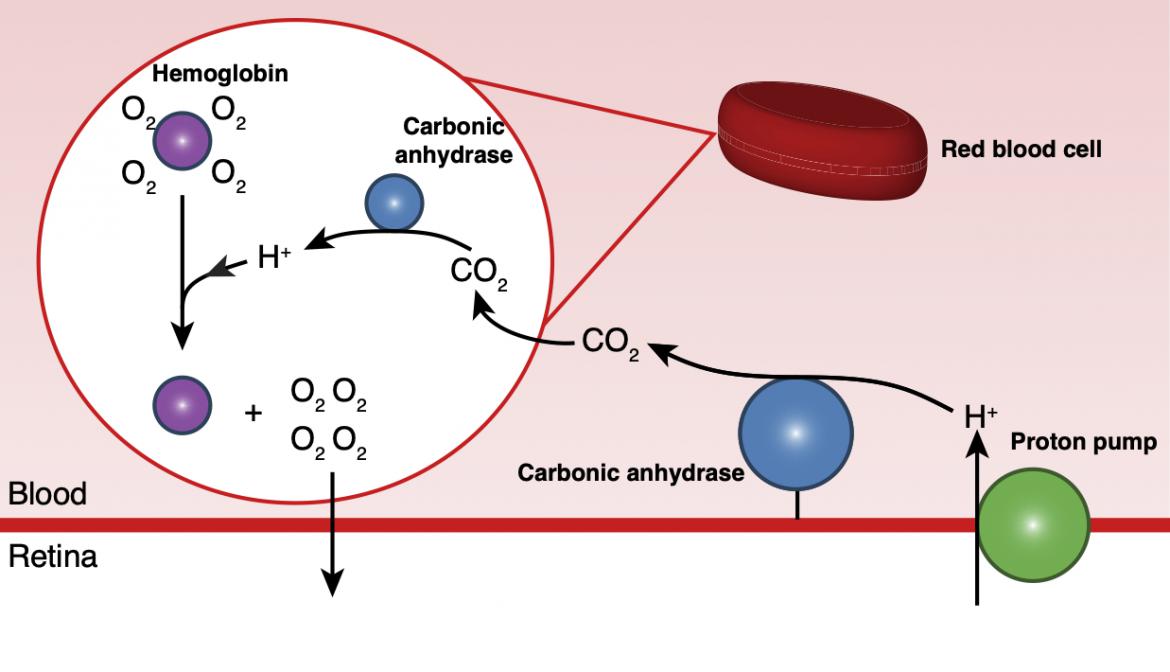UBC Science: "Fisheye lens: How fish keep their eyes sharp"
Aarhus Institute of Advanced Studies: "Acidic fish eyes see better"
Christian Damsgaard, Henrik Lauridsen, Till S Harter, Garfield T Kwan, Jesper S Thomsen, Anette MD Funder, Claudiu T Supuran, Martin Tresguerres, Philip GD Matthews, Colin J Brauner. 2020. A novel acidification mechanism for greatly enhanced oxygen supply to the fish retina. eLife
Abstract
Previously, we showed that the evolution of high acuity vision in fishes was directly associated with their unique pH-sensitive hemoglobins that allow O2 to be delivered to the retina at PO2s more than ten-fold that of arterial blood (Damsgaard et al., 2019). Here, we show strong evidence that vacuolar-type H+-ATPase and plasma-accessible carbonic anhydrase in the vascular structure supplying the retina act together to acidify the red blood cell leading to O2 secretion. In vivo data indicate that this pathway primarily affects the oxygenation of the inner retina involved in signal processing and transduction, and that the evolution of this pathway was tightly associated with the morphological expansion of the inner retina. We conclude that this mechanism for retinal oxygenation played a vital role in the adaptive evolution of vision in teleost fishes.

Blood acidification mechanism for greatly enhanced oxygen supply to the fish eye. A proton pump (green) excretes protons (H+) into the retinal blood vessels lining the back of the photoreceptors. Carbonic anhydrase (blue) rapidly converts the protons into CO2 that diffuses into the red blood cell (red). An intracellular carbonic anhydrase converts CO2 back into protons that releases oxygen off hemoglobin (purple) into the retina. Modified from Damsgaard et al. 2020 eLife.